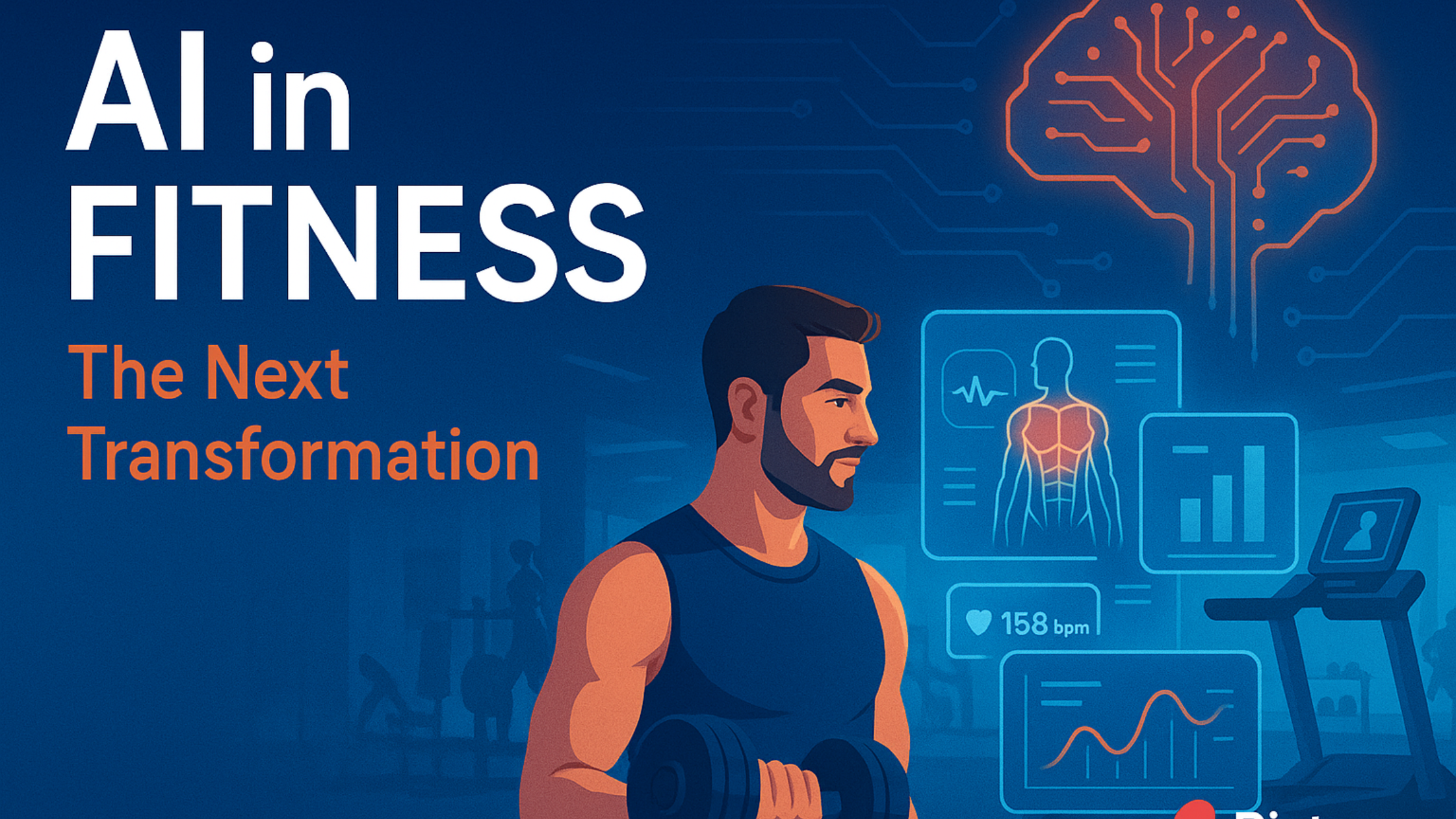In the coming years, the organizations that thrive in fitness will be those that embrace AI to personalize member experiences, optimize retention, reduce operational inefficiencies, and unlock new revenue streams. For their executives, this isn’t about understanding algorithms, it’s about understanding competitive advantage and how AI can quickly improve the way people interact with fitness.
Health Personalization That Scales
Executives must now see personalization not as a “nice to have” but as a revenue strategy. The organizations that win will own their data and member stack, making AI-driven personalization not just possible, but more profitable.
For decades, the fitness experience has relied on standardized routines and group-based offerings. While effective, these “one-size-fits-all” approaches no longer match what members demand. Consumers have grown accustomed to personalized experiences in other industries—Netflix curates what we watch, Spotify adapts to how we listen, and Amazon anticipates what we buy. Fitness must now meet the same standard.
AI enables hyper-personalization at scale. By analyzing data from attendance, wearables, and engagement patterns, AI can design individualized fitness journeys for each member. This means…
• tailored class recommendations
• adaptive workout plans
• nutrition guidance
• personalized recovery insights.
For example, a 25-year-old seeking high-intensity group workouts will see a very different user journey than a 60-year-old looking for low-impact strength training, but both will feel understood and that emotional connection is the foundation of loyalty
Or consider this new idea of an AI-powered fitness app. Instead of generic notifications, it nudges members at the right time of day based on their past behavior, recommends recovery when fatigue signs appear, and offers discounts for new services that fit their preferences.

This is the evolution from transactional memberships to lifestyle partnerships.
The Business Impact of Hyper-Personalized Workouts:
• Higher member engagement rates
• Increased lifetime value per customer
• Stronger differentiation against competitors still offering generic experiences
Improving Retention and Loyalty
Retention has always been the fitness industry’s Achilles’ heel. Fitness industry reports show churn rates as high as 30–50% annually for gyms and studio. Even more concerning, about 50% of new gym members cancel or become inactive within six months. Each lost member represents sunk acquisition cost and missed revenue opportunities.
AI changes this dynamic by shifting retention from reactive to proactive.
With better predictive churn modeling capabilities, AI identifies early warning signs: a decline in attendance, fewer logins to a digital app, delayed payments, or lower participation in community events. Once flagged, staff can intervene with personalized incentives, such as a discounted package, a tailored workout challenge, or a supportive coaching call.
This is where AI’s real value shines—not in replacing the human connection, but in augmenting it with insight. When staff can see which members are at highest risk of leaving, they can focus their attention where it matters most.

AI Assists in Membership Retention
Retention is not just about keeping members longer, it’s about turning at-risk members into brand advocates by showing them they are valued.
Many fitness companies are seeing impact through AI-powered assistants. These agents can resolve payment issues instantly, recover lost revenue, and communicate respectfully with members.
Instead of sending generic emails, AI assistants personalize the conversation, keeping the relationship positive regarding late dues or cancelled memberships, which protects business’ bottom line, customer relationship, and ultimately brand reputation.
The Business Impact
• Reduced churn through timely interventions
• Immediate revenue recovery from failed payments
• Freed staff capacity to focus on higher-value engagement
Automating the Back Office
Executives should view AI automation not as cost-cutting alone but as capacity creation. Freed hours can be reinvested into member engagement, community building, and service innovation.
While member-facing experiences often get the spotlight, the hidden engine of the fitness industry is its back office. Unfortunately, many organizations still rely on outdated, manual processes. HR onboarding, locker assignments, payment handling, and scheduling are often time-consuming and error-prone. The result? Staff stretched thin and less time spent delivering great member experiences.
AI-driven automation is designed to eliminate these inefficiencies. AI agents act as digital coworkers, taking over repetitive workflows while maintaining human oversight.
- Locker assignments can be managed automatically.
- HR onboarding can be supported by AI mentors that walk new hires through company policies, benefits, and first-week tasks.
- Finance and sales teams can offload commission tracking, invoicing, and data entry
The Business Impact
- Lower operational costs through reduced manual effort
- Faster, more accurate workflows
- Improved employee satisfaction, as staff focus on meaningful work
Driving New Revenue Opportunities
Revenue growth in the AI era comes not from pushing more products, but from anticipating needs before members articulate them.
Beyond efficiency and retention, AI is a growth engine. Fitness companies can leverage AI to build new revenue channels and create smarter engagement strategies:
- Dynamic Pricing Models: AI can adjust membership pricing or class fees based on demand, seasonality, and customer segments—similar to how airlines and hotels optimize their revenue.
- Personalized Upsells: By analyzing behavior, AI identifies when a member is most likely to purchase a personal training package, nutrition consultation, or premium class. Offers are delivered in real-time, increasing conversion.
- Loyalty Program Optimization: AI agents can gamify power adaptive loyalty programs, rewarding members based on their unique behaviors and preferences. This keeps members invested and increases long-term value.
- Predictive Lead Scoring: For growth-focused studios and gyms, AI can rank potential leads, helping sales teams prioritize the highest-value prospects.
- COMING SOON: AI will directly recommend local gym features and workouts: For users looking for a certain type of workout, AI will be able to crawl local websites and recommend certain gym features, workouts, and machines that will likely achieve the end user’s goal the fastest.
The Business Impact
- Increased revenue per member
- Higher conversion rates for premium services
- Stronger ROI on marketing and sales campaigns

Leadership in the AI Era
AI is not replacing human leadership—it is reshaping it. The most successful fitness leaders will be those who coach their organizations into the AI era with clarity and confidence.
Technology alone doesn’t transform an organization. Leadership does. For executives in fitness, the adoption of AI requires more than investment—it requires vision and change management.
One of the most common risks is over-expectation: assuming AI will solve everything instantly. The opposite risk, under-expectation, is treating AI as a small side project. The reality lies in between. Leaders must champion AI as a strategic enabler, reinvesting the capacity it frees into higher-value activities.
At Pisteyo, we advise leaders to reallocate time gained from automation strategically:
- 70% into client-facing value creation,
- 20% into upskilling staff
- 10% into innovation.
This approach ensures long-term resilience and prevents the erosion of quality or morale
The Business Impact
- Increased organizational agility
- A workforce empowered, not displaced, by AI
- Sustained competitive differentiation
Building a Responsible Foundation
As fitness companies move forward with AI adoption, governance cannot be overlooked. Issues such as data privacy, bias, and compliance are central to building trust with members. A poorly implemented AI system risks eroding confidence and damaging brand reputation.
Executives should establish a framework that ensures AI deployment aligns with ethical standards and industry regulations. This includes clear data-use policies, transparency in personalization, and regular audits of AI-driven decisions.
The Business Impact
- Reduced legal and regulatory risk
- Stronger member trust and brand reputation
- A scalable foundation for future AI growth
In the age of wellness, trust is currency. Responsible AI adoption safeguards it.
The Bottom Line
AI is already reshaping the fitness industry. From hyper-personalized journeys to predictive retention strategies, from automated back offices to new revenue pathways, the impact is both immediate and transformative. For fitness executives, the opportunity is clear: act now and lead the wave, or risk being left behind.
The organizations that thrive will not view AI as another technology rollout but as a strategic business transformation. They will personalize at scale, automate intelligently, grow revenue predictively, and lead responsibly. Most importantly, they will align AI adoption with their ultimate goal: helping members live healthier, more fulfilling lives.
The wave is here. The fitness companies that embrace AI today will not only adapt to the future, they will define it.
All of these use cases proposed are far from conjecture and can be made possible within your organization in 2-week sprint intervals.
The key is not just blindly adopting new technology. Incorporating AI starts with seasoned operations leaders who will not only understand where AI can improve your business but (most importantly) how your business operates profitably. This is where Pisteyo shines.
Learn how the Pisteyo team will guide your fitness company into the age of AI and schedule a 30-minute call with a member of our leadership team.












